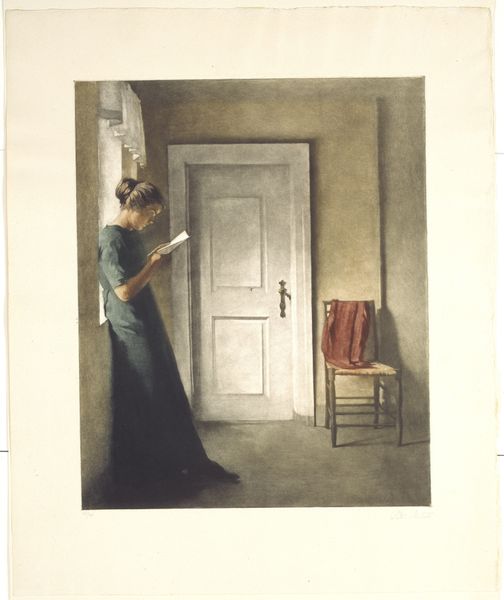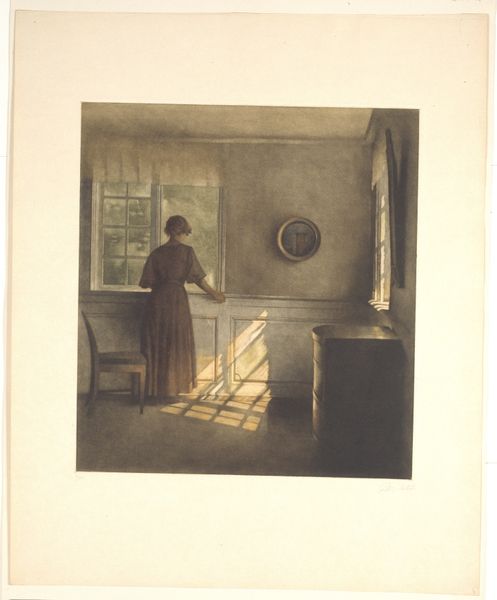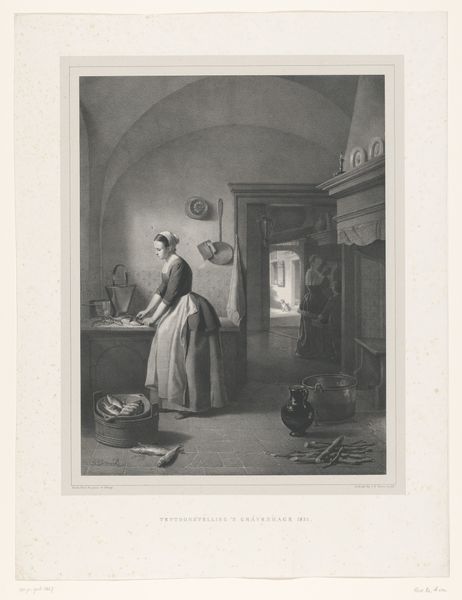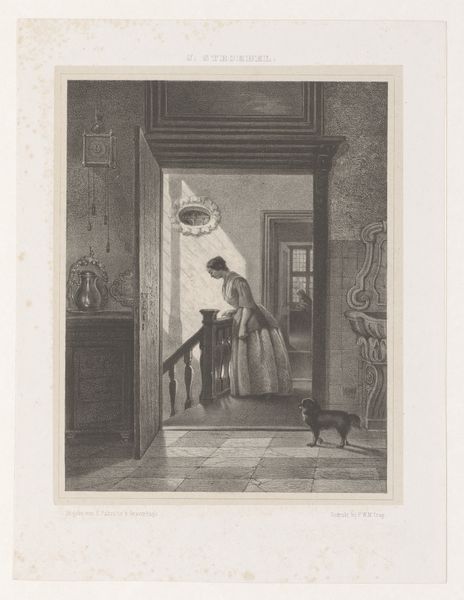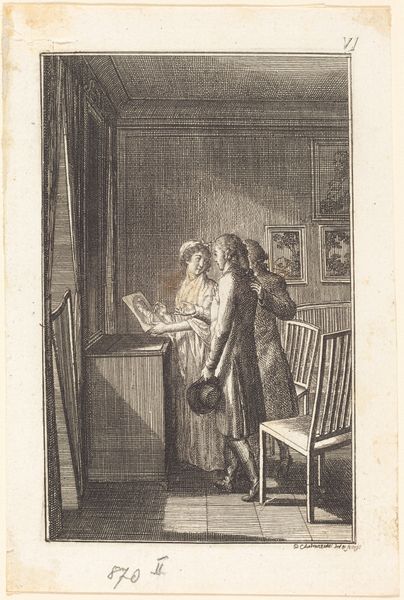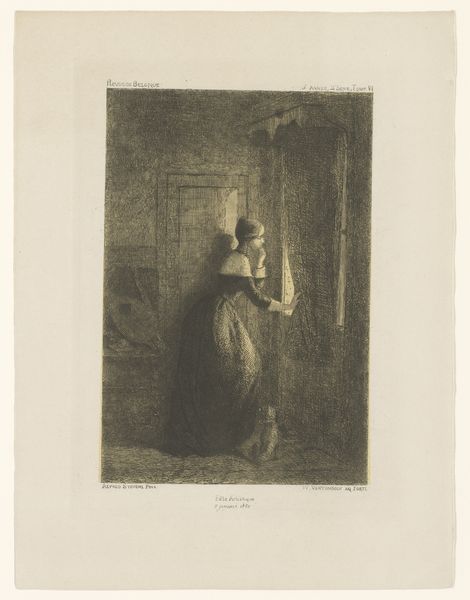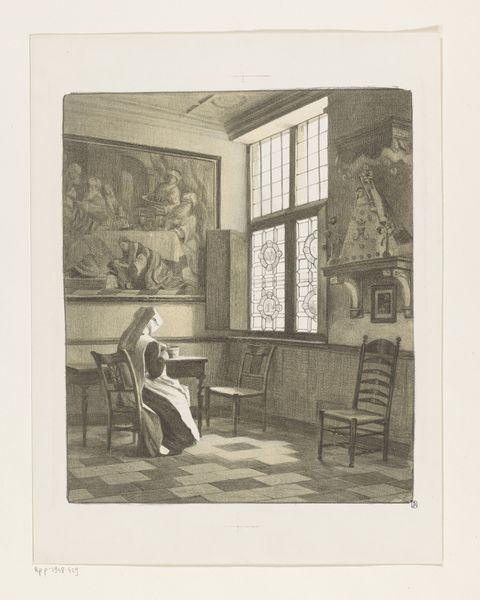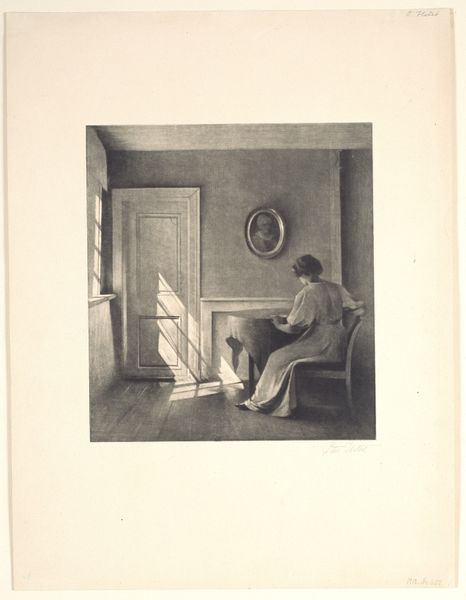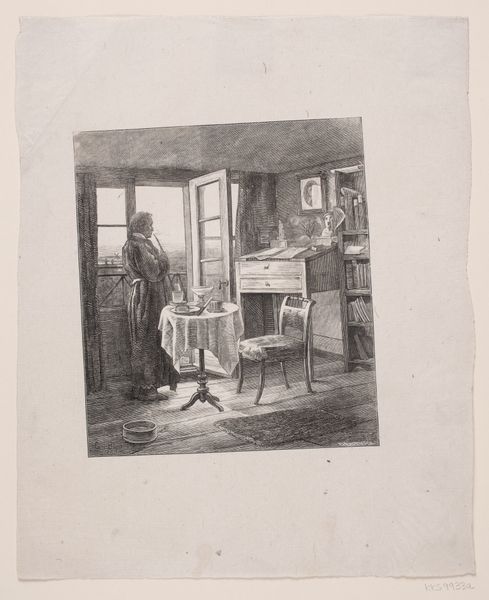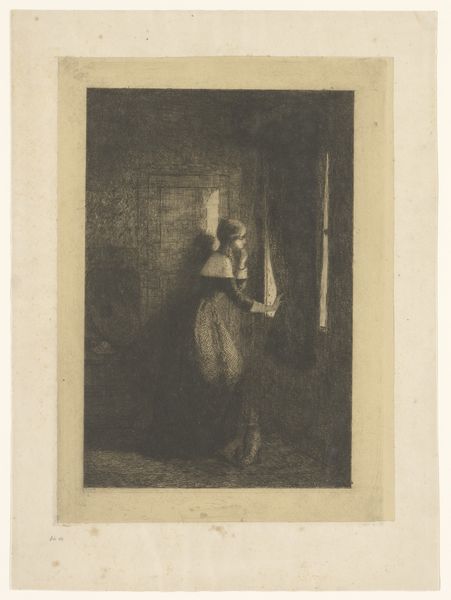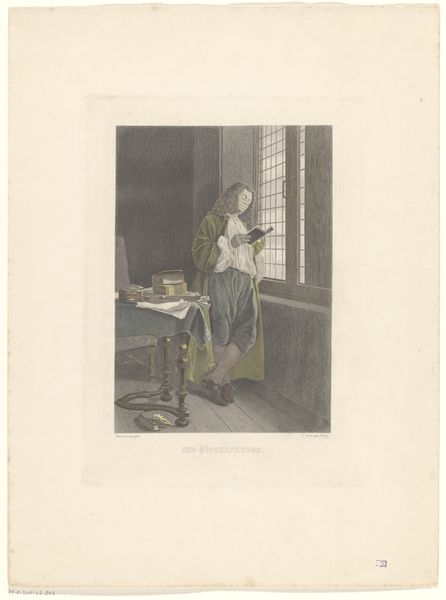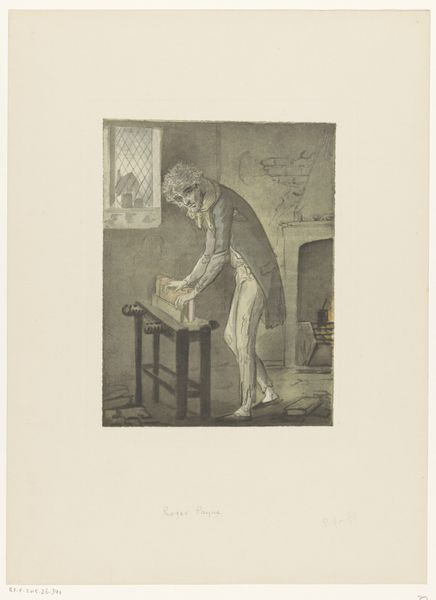
print, mezzotint
#
portrait
# print
#
form
#
intimism
#
mezzotint
#
line
#
cityscape
#
genre-painting
#
northern-renaissance
#
realism
Dimensions: 418 mm (height) x 388 mm (width) (plademaal)
Editor: This is Peter Ilsted’s "Interiør," from 1912. It's a mezzotint print, and it’s quite subdued. The figure, a woman, seems almost trapped within the muted tones and the stark geometry of the doorframe. What’s your interpretation of this interior space? Curator: From a materialist perspective, consider the mezzotint process itself. This technique involves laboriously roughening the entire plate, then smoothing out areas to create the image. What kind of labor do you think was involved in creating this tonal range? How does the use of this specific printing method shape the viewer's experience of the image compared to, say, a quicker etching or lithograph? Editor: I hadn’t thought about the labor involved in creating the mezzotint itself. It must have been incredibly time-consuming to get these subtle gradations of tone. It gives the image a delicate, almost melancholic quality, doesn't it? Curator: Precisely. Now, consider the domestic context depicted. This is an interior scene, a space of presumed privacy and domesticity. Who is consuming this image? Who had access to this type of print in 1912? Was it the woman depicted? Was it accessible for mass consumption? Thinking about the economics and availability helps us to position the work within its societal framework. Editor: That makes a lot of sense. It’s not just an image of a woman in a room, but a carefully constructed object designed for a specific market. Did the relative difficulty and high production costs contribute to its artistic value? Curator: Yes, the very labor involved and controlled scarcity arguably elevates its status, subtly shifting our understanding of both the woman depicted and the material object depicting her. In what way could we compare this process with mass printing and the devaluation of the woman as simply another commodity? Editor: It's fascinating to consider the intersection of labor, material, and social context within this seemingly quiet image. Thanks for sharing your perspective! Curator: It was my pleasure. Remember, exploring the material conditions surrounding art can unlock rich layers of meaning.
Comments
No comments
Be the first to comment and join the conversation on the ultimate creative platform.
